Award of Excellence
Sh*tscape: Mumbai’s Landscape In-Between
Bret Betnar, Student ASLA, University of Pennsylvania
Faculty Advisors: Anuradha Mathur, ASLA, Dilip da Cunha
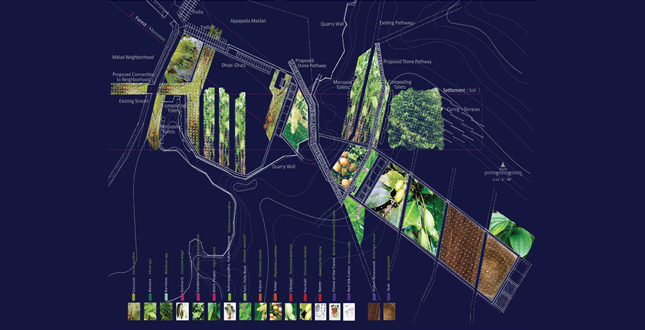
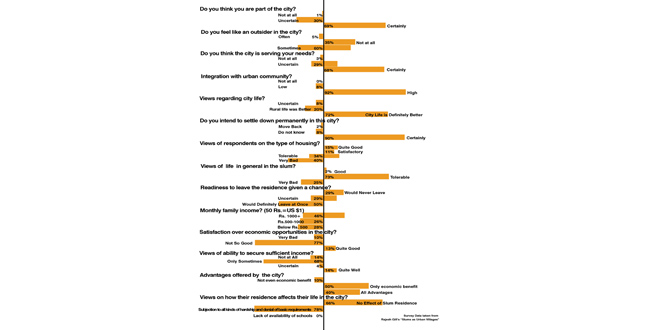 Close Me!
Close Me!Survey Data taken from Rajesh Gill’s “Slums as Urban Villages”
Download Hi-Res ImagePhoto: Bret Betnar
Photo 2 of 12
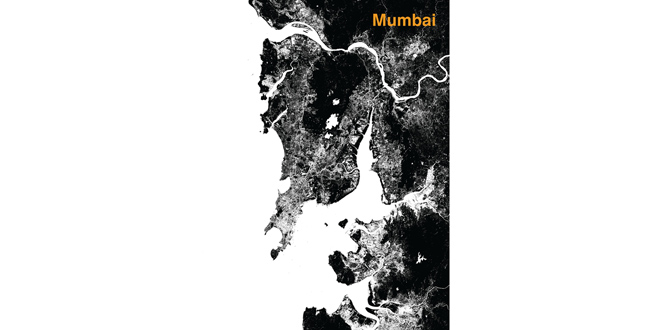
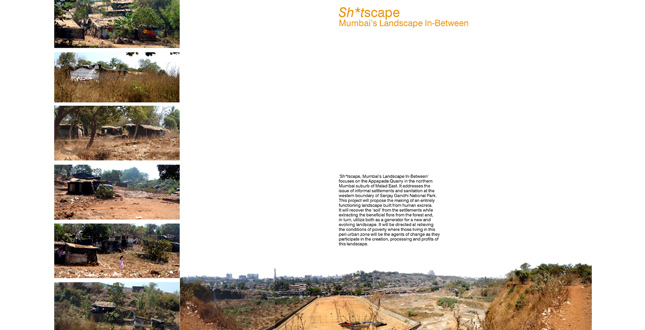 Close Me!
Close Me!This project will propose the making of an entirely functioning landscape built from human excreta. It will recover the ‘soil’ from the settlements while extracting the beneficial flora from the forest and, in turn, utilize both as a generator for a new and evolving landscape. It will be directed at relieving the conditions of poverty where those living in this peri-urban zone will be the agents of change as they participate in the creation, processing and profits of this landscape.
Download Hi-Res ImagePhoto: Bret Betnar
Photo 4 of 12
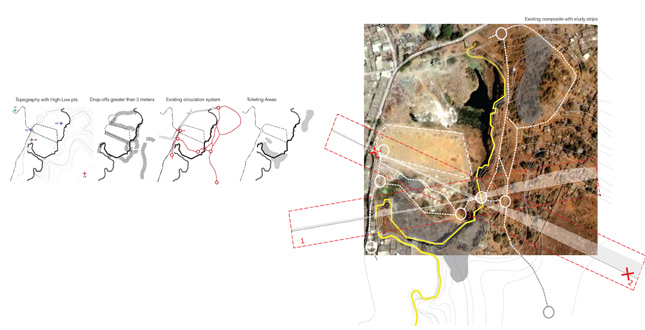 Close Me!
Close Me!The Appapada Quarry separates the established neighborhood of Malad East and a hillside of informal settlements. In the middle of the quarry is the large Appapada Maidan, used by kids and adults from varying parts of northern Mumbai. Several areas in and around the quarry environs are used for toileting by the local populace (above and opposite, in grey).
Download Hi-Res ImagePhoto: Bret Betnar
Photo 5 of 12
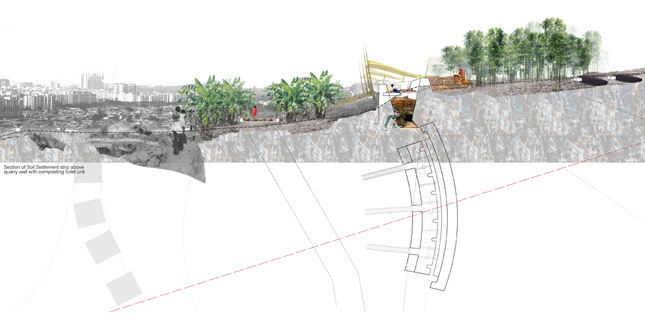 Close Me!
Close Me!‘Sh*tscape’ proposes three major introductory insertions: constructed trench-like composting toilets, a stone pathway traversing the quarry wall and stone ‘tanks’ for the retention of water. Other minor insertions should include a slow-sand filter for availability of potable water, a grove of both coconuts and bananas to help begin the functioning of the landscape and pit toilets for use during the monsoon season.
Download Hi-Res ImagePhoto: Bret Betnar
Photo 6 of 12
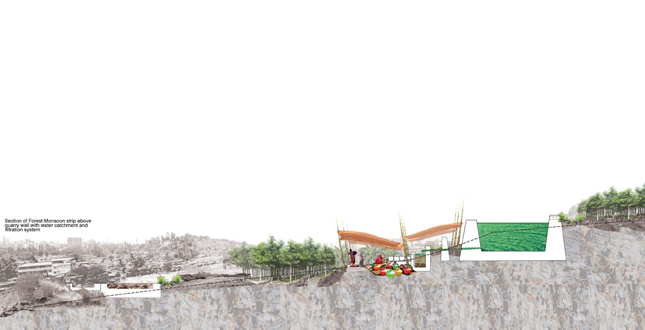 Close Me!
Close Me!With water, improved soil, food supplies and the resiliency of the local population, this landscape can evolve throughout time to accommodate more varieties of produce and the potentially profitable growing of timber and Ayurvedic plant material. Additions to the water and toilet systems can be made as required by the local community. If this landscape is to be a success, it will need not only the inputs from the community, but their ingenuity in adapting the plan to their own uses. As such, it is hoped that this landscape could be maintained through multi-family networks, much like a village system. This project is designed as a prototype scenario which, if successful, could be repeated elsewhere along the western edge of the park.
Download Hi-Res ImagePhoto: Bret Betnar
Photo 7 of 12
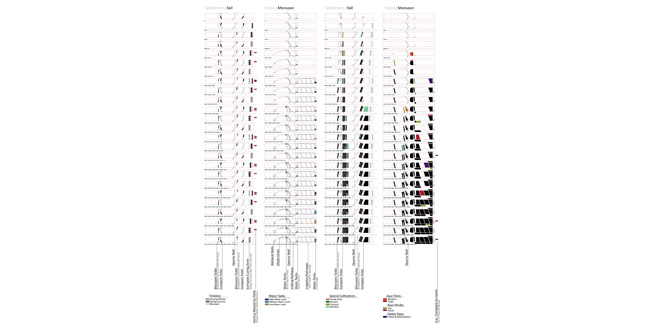 Close Me!
Close Me!These graphs represent a temporal evolution of the site: I) toileting/composting process; II) development of site’s water and pedestrian infrastructure; III) special cultivations, primarily food; IV) economic-generating Ayurvedic and forest plants.
Download Hi-Res ImagePhoto: Bret Betnar
Photo 8 of 12
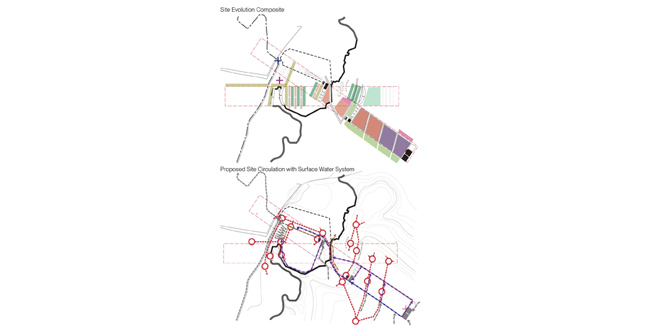 Close Me!
Close Me!Top: Site Evolution Composite Bottom: Proposed Site Ciruclation with Surface Water System
Download Hi-Res ImagePhoto: Bret Betnar
Photo 9 of 12
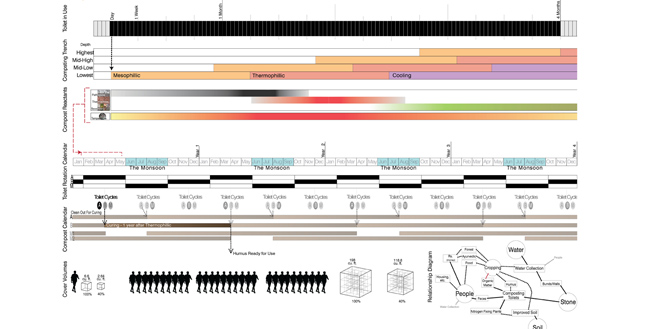
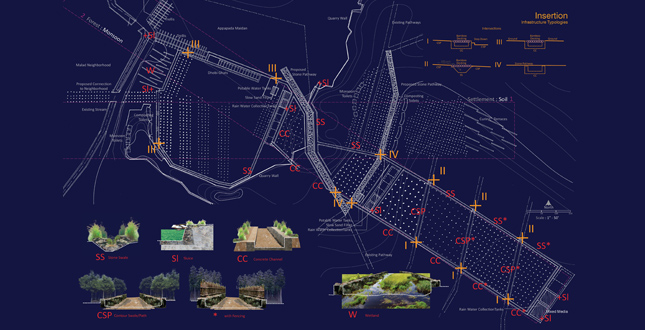
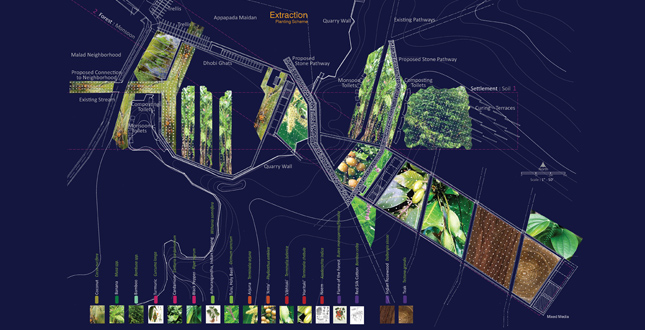
Project Statement
A growing number of the world’s population has little or no access to sanitation. This is particularly prevalent in India, where over 750 million people are without adequate sanitation facilities. Few designers have attempted to grapple with this ‘dirty’ subject. Sh*tscape: Mumbai’s Landscape In-Between proposes the making of an entirely functioning landscape built from human excreta. It will recover the ‘soil’ from the settlements while extracting the beneficial flora from the forest and, in turn, utilize both as a generator for a new and evolving landscape.
Project Narrative
Introduction
Sh*tscape, Mumbai’s Landscape In-Between focuses on the Appapada Quarry in the northern Mumbai suburb of Malad East. It addresses the issue of informal settlements and sanitation at the western boundary of Sanjay Gandhi National Park. This project will propose the making of an entirely functioning landscape built from human excreta. It will recover the ‘soil’ from the settlements while extracting the beneficial flora from the forest and, in turn, utilize both as a generator for a new and evolving landscape. It will be directed at relieving the conditions of poverty where those living in this peri-urban zone will be the agents of change as they participate in the creation, processing and profits of this landscape.
The Appapada Quarry separates the established neighborhood of Malad East and a hillside of informal settlements. In the middle of the quarry is the large Appapada Maidan, used by kids and adults from varying parts of northern Mumbai. Several areas in and around the quarry environs are used for toileting by the local populace.
Insertion
Sh*tscape proposes three major introductory insertions: constructed trench-like composting toilets, a stone pathway traversing the quarry wall and stone ‘tanks’ for the retention of water. Other minor insertions should include a slow-sand filter for availability of potable water, a grove of both coconuts and bananas to help begin the functioning of the landscape and pit toilets for use during the monsoon season.
Extraction
With water, improved soil, food supplies and the resiliency of the local population, this landscape can evolve throughout time to accommodate more varieties of produce and the potentially profitable growing of timber and Ayurvedic plant material. Additions to the water and toilet systems can be made as required by the local community as it grows and formalizes.
If this landscape is to be a success, it will need not only the inputs from the community, but their ingenuity in adapting the plan to their own uses. As such, it is hoped that this landscape could be maintained through multi-family networks, much like a village system. This project is designed as a prototype scenario which, if successful, could be repeated elsewhere along the western edge of the park.
Additional Project Credits
Sunjoy Monga
Kavita Khanna
The People of Mumbai
Mumbai Studio Mates
University of Pennsylvania Department of Landscape Architecture
The Trident/Oberoi
Hare Rama Hare Krishna Mandir
Aaron Kelley and Carlos





